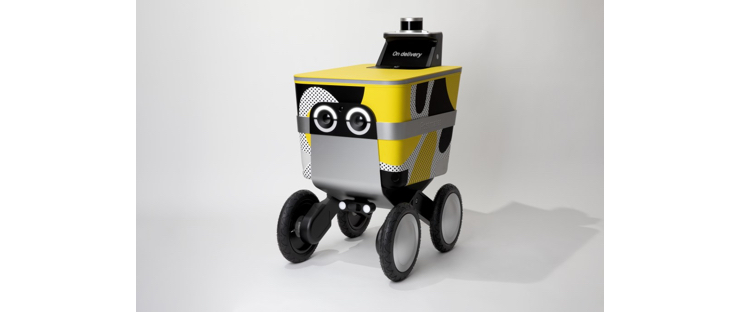A huge amount of public attention falls on autonomous cars. Though autonomous delivery robots will arguably be out on the streets sooner, and have their own large effect on the way we live day to day.
Postmates’ new delivery robot, Serve, bears an uncanny resemblance to Wall-E, and will use the latest robotics technology to help economize the company’s on-demand food delivery service. Using Velodyne’s VLP-16 lidar to detect obstacles (including people)as it totters down the sidewalk ferrying food from restaurants to your front door
According to a Wired article about the cute little delivery bot, 90% of Postmates’ deliveries currently use cars, though more than half of these deliveries occur within walking distance. “Somehow, as a society, we are OK with the fact that we are moving a two-pound burrito with a two-ton car,” Ali Kashani, Postmates’ VP of Robotics, told the magazine.
Kashani also notes that this sophisticated little robot wandering the streets day after day can do a lot more than deliver burritos for those of us too lazy (or swamped with work?) to walk a few blocks to the taqueria. It could ferry day-old food to food banks or shelters, and it could create a detailed 3D map of the streets it passes over.
This got me thinking, where will our 3D maps come from in the future? Stories like this suggest that we might buy them from private companies that rise to prominence with one business model—say, delivering burritos—and use that as a way to start gathering valuable spatial data about the areas they serve. When you have thousands of little robots roving around deliver pad thai, wearing VLP-16 lidar sensors as hats, you’re bound to end up with a very detailed ground-level 3D data set of some highly trafficked areas in major cities. And that data is going to be worth a lot.
How a company chooses to use that data is another matter. Some might find it most valuable to sell it to outside users (we can hope), but it’s also entirely possible that companies will use it to sharpen their competitive edge in other business areas. In a decade where every tech company wants to do everything, it’s not unreasonable to expect that they might want to hold on to all that beautiful data, which means it’s also possible that we may end up gathering our data the same way we always have—by sending people out in the field with scanners.






